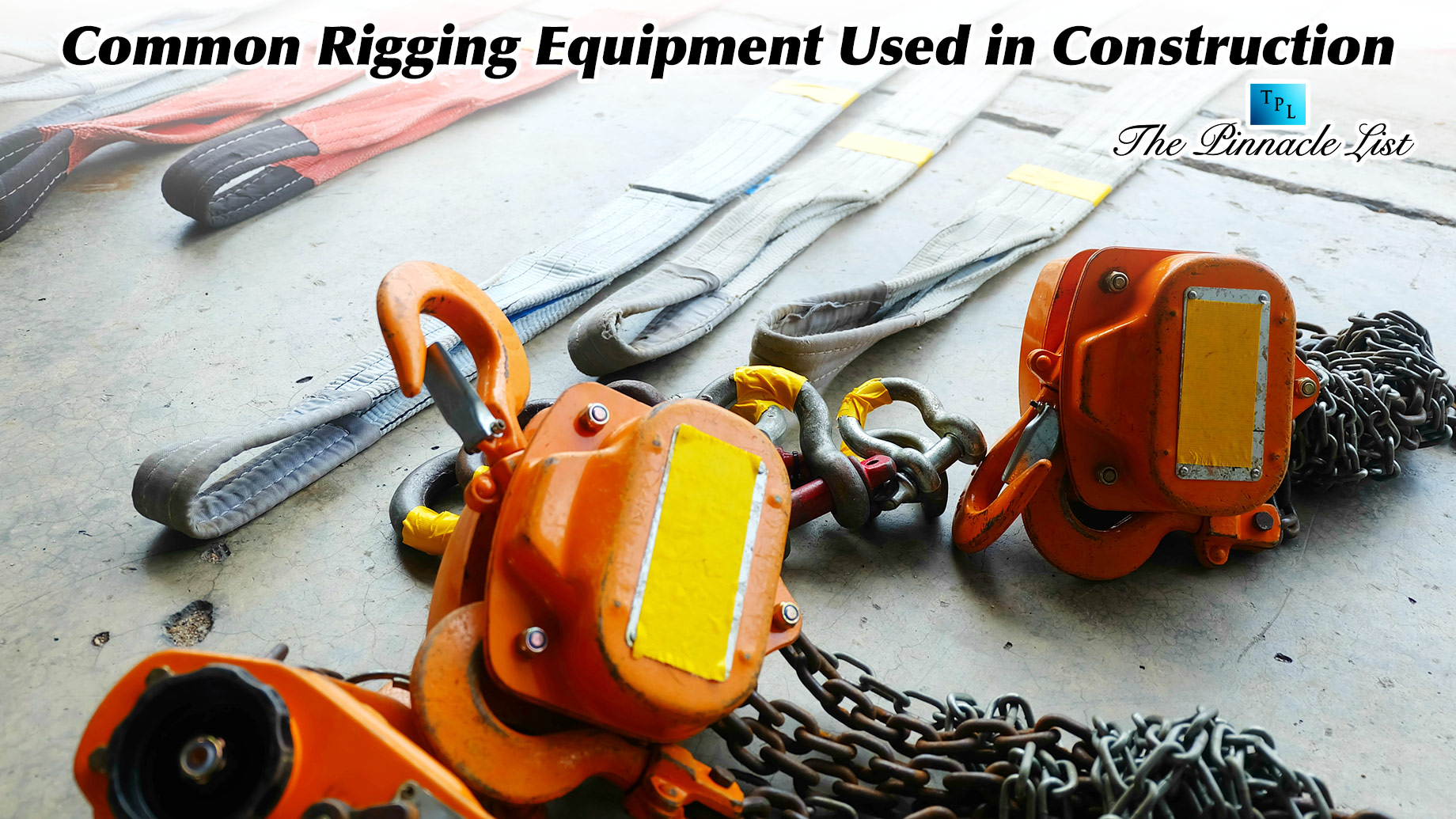
Rigging is essential to construction, ensuring that heavy loads are lifted, moved, and secured safely and efficiently. Construction projects would face significant safety risks and operational inefficiencies without the right rigging equipment, which is why it plays a crucial role in daily construction operations, from cranes lifting steel beams to hoists securing precast concrete panels.
This article explores some of the most common rigging equipment used in the construction industry.
1. Slings
Slings are some of the most widely used rigging components in construction. They attach to the load and provide a secure lifting point for cranes, hoists, or other lifting devices. Different types of slings are used depending on the load’s weight, shape, and material.
- Wire Rope Slings – Known for their strength and durability, wire rope slings are used for lifting heavy loads, such as structural steel components and precast concrete elements.
- Chain Slings – Made from high-strength alloy steel, chain slings are ideal for lifting irregularly shaped or extremely heavy loads, as well as lifting in extreme environments.
- Synthetic Slings – Constructed from nylon or polyester, these slings are lightweight and flexible, making them useful for lifting delicate or finished materials without causing damage.
2. Shackles
Shackles serve as a connection point between slings, rigging hooks, and other rigging components. They come in different types, including anchor shackles and chain shackles, and are used to create a secure and flexible rigging system. Shackles must be properly rated for the load being lifted to prevent failure during lifting operations.
3. Hoists
Hoists are mechanical devices used to lift and lower loads vertically. They are commonly used in construction sites where materials need to be lifted to different heights.
- Manual Hoists – Operated by hand using a chain or lever mechanism, manual hoists are useful for smaller loads and precise lifting applications.
- Electric Hoists – These hoists use electric motors to lift heavier loads with ease and are often seen in high-rise construction projects.
- Pneumatic Hoists – Powered by compressed air, these hoists are used in hazardous environments, such as gas rigs, where electrical sparks must be avoided.
4. Lifting Beams and Spreader Bars
Both lifting beams and spreader bars help distribute a load’s weight evenly, ensuring a safe and balanced lift.
- Lifting Beams are rigid structures with a single attachment point for the crane and multiple lifting points for the load. They provide better control when lifting off-center or fragile loads.
- Spreader Bars – Used to spread the weight across multiple lifting points, these bars help prevent excessive stress on the load, reducing the risk of structural damage.
5. Turnbuckles
Turnbuckles are adjustable devices used to add tension and make fine adjustments to rigging setups. They help ensure proper alignment and stability when securing heavy materials in place. Construction sites often use turnbuckles for bracing scaffolding, stabilizing towers, and securing heavy loads during transport.
6. Rigging Hooks
Rigging hooks connect slings, chains, or wire ropes to loads. They come in various designs, including slip hooks, grab hooks, and self-locking hooks. Construction workers rely on rigging hooks to safely lift and transport materials, ensuring that the connection remains secure under heavy load. Properly rated rigging hooks help prevent accidental disengagement, reducing the risk of dropped loads.
7. Eye Bolts and Swivel Hoist Rings
Eye bolts and swivel hoist rings serve as attachment points for lifting equipment. They are screwed into a load to provide a secure anchor for hoists or slings. Swivel hoist rings are beneficial because they can rotate 360 degrees, allowing for better flexibility and load control.
8. Pulleys and Blocks
Pulleys and blocks redirect lifting forces and create mechanical advantage in rigging setups. These components help reduce the force needed to lift heavy loads, making them invaluable for complex lifting operations.
Conclusion
Rigging equipment is essential for safe and efficient construction operations. Whether lifting heavy beams, securing loads, or adjusting tension, different rigging equipment parts come together to ensure a safe construction process. Understanding and using the right rigging equipment—such as slings, shackles, hoists, hooks, and lifting beams—helps maintain workplace safety and improves productivity on construction sites.
By selecting the appropriate rigging tools and following industry best practices, construction crews can enhance their efficiency while minimizing the risks associated with heavy lifting.